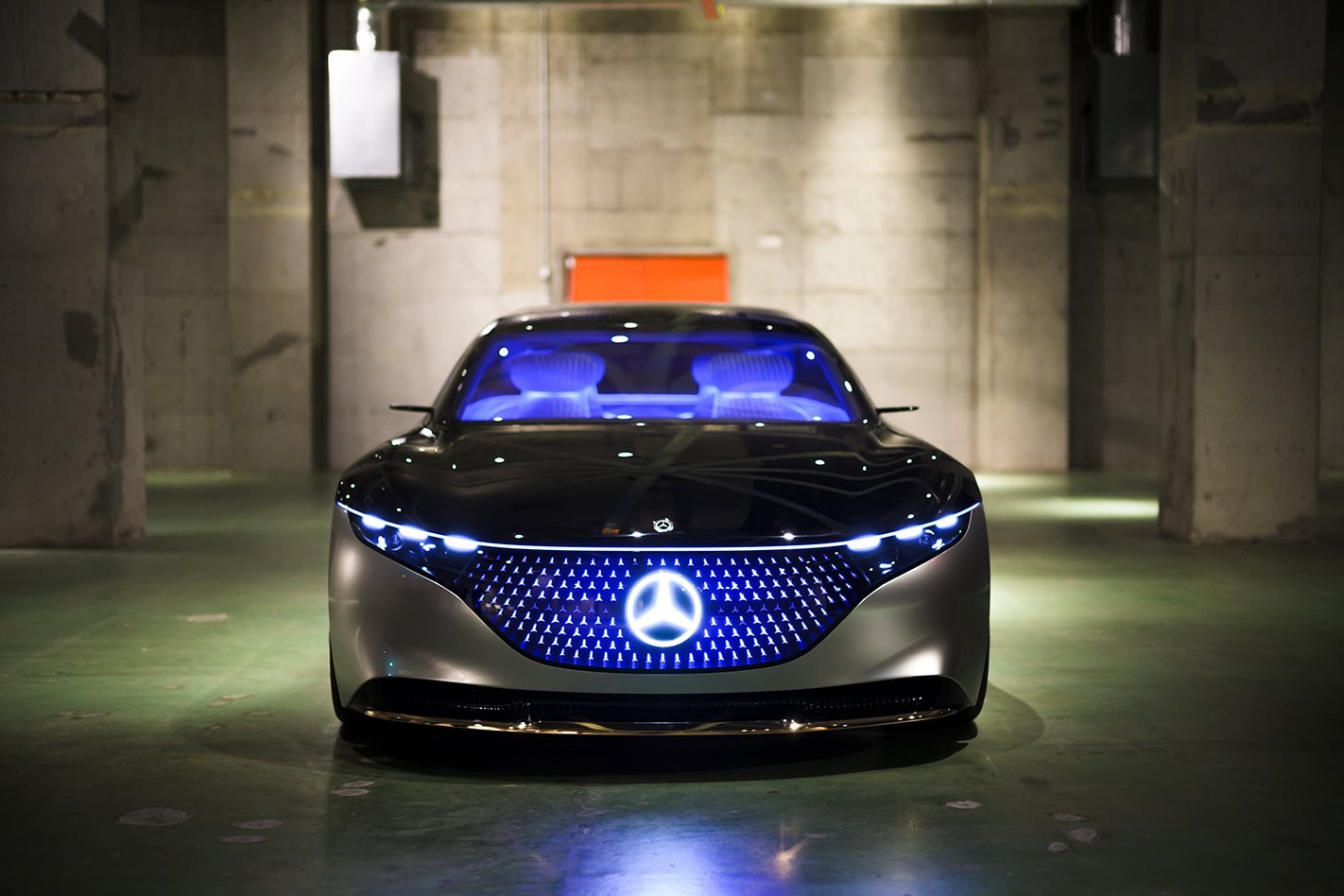What’s about to happen is incredibly rare. In fact, it’s almost unheard of. And if we’re being totally honest, that’s what makes it so damn terrifying.
You find Wheels deep in the heart of chaotic Tokyo, staring open-mouthed at the Mercedes-Benz Vision EQS, the futuristic EV saloon that had, only weeks before, rolled onto the stage of the Frankfurt motor show.
We were in Germany for that moment, too, but our mouths then had remained firmly shut even as the EV answer to the Mercedes-Benz S-Class slinked silently onto the stage, accompanied by all the hype and fanfare typical of any major motor show reveal. It had looked special, sure, but pressed up against that glitzy and glamorous backdrop, not exceptional.
But this? This is different, because now the EQS is parked in a grimy downtown warehouse, its bright fluorescent interior lighting bouncing off the walls, giving the cavernous space a kind of Christmas-tree glow. It looks massively out of place. Despite sharing its dimensions, more or less, with an S-Class, it also looks just plain massive. And it’s breathtaking.
That it’s now in Japan isn’t the rare bit. The Tokyo motor show is days away at this point and Benz, hoping to extract maximum bang from the huge bucks that went into creating this one-of-just-one EV, will again display the EQS on its stand. Nope, the rare bit is that, nestled in my increasingly sweaty palm, is the key to Benz’s one-off creation. And I’ve just been told to jump into the driver’s seat.
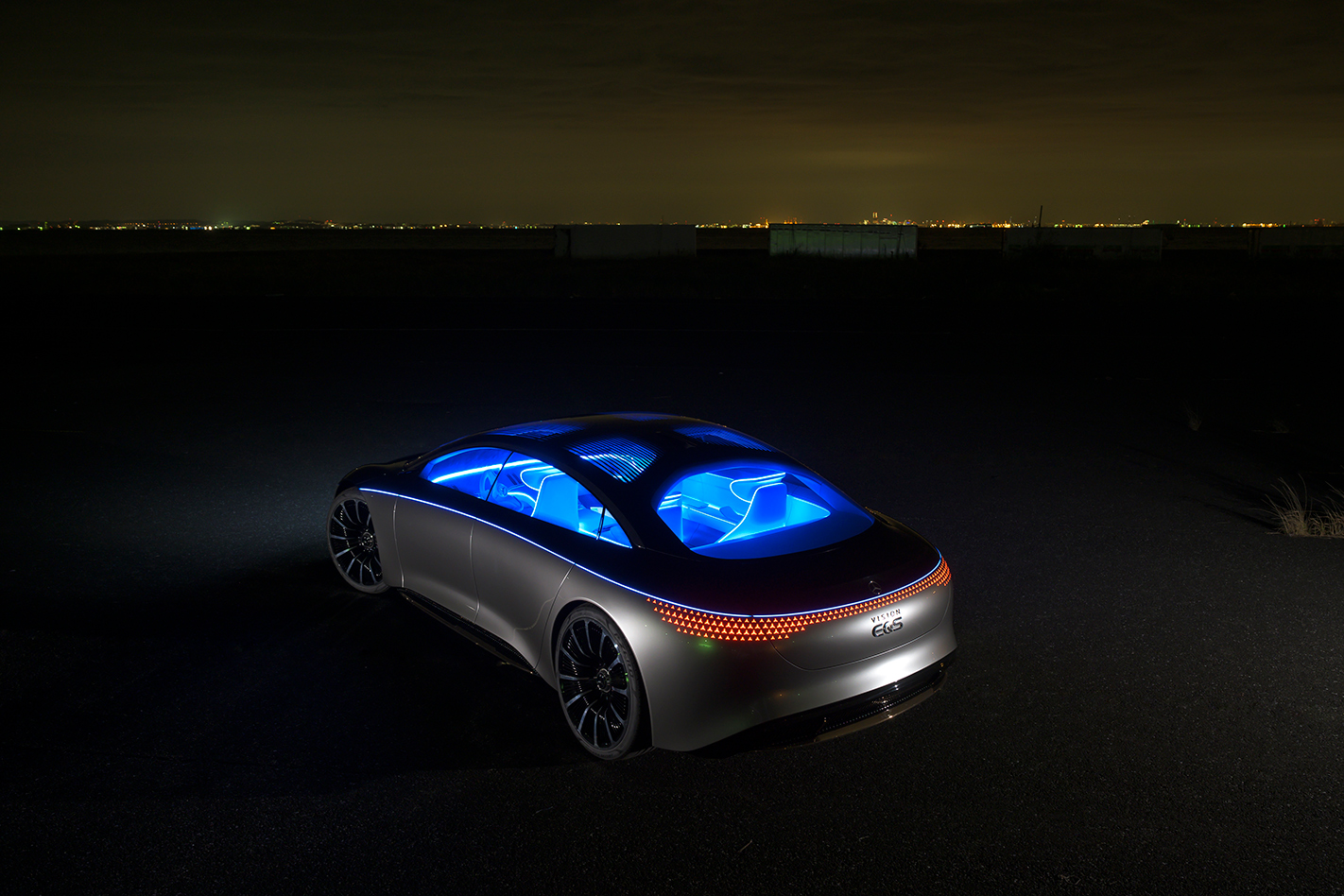
What would it be worth? Theoretically, it’s priceless. But when pushed for a ballpark manufacturing cost, Benz’s design team will only answer that it was “several million euros”, and that’s without fully tallying up the many, many man hours that have been sunk into its construction.
All of which explains the small army of people travelling with the vehicle, a thick blend of engineers to ensure things continue to run smoothly, and no-nonsense minders there to make sure nervous Australians don’t ruin Mercedes’ Tokyo show plans by driving the brand’s prized concept into an unforgiving wall.
Parked as it is now, away from camera-wielding media types, velvet ropes and overzealous security guards that will surround it at the show, you can’t help but be struck by a point that somehow slipped past us in Frankfurt; that, arresting though it might well be, this glimpse at the future of Mercedes-Benz motoring still looks an awful lot like a car.
Remember the early days of the EV revolution, when car companies would talk about how electric drivetrains would change design so much that the vehicles of tomorrow would look nothing like the cars of today?
“We were watching that trend, too,” says Holger Hutzenlaub, senior manger of the Mercedes-Benz advanced design team. “And more importantly, we were watching customer reaction to that trend.”
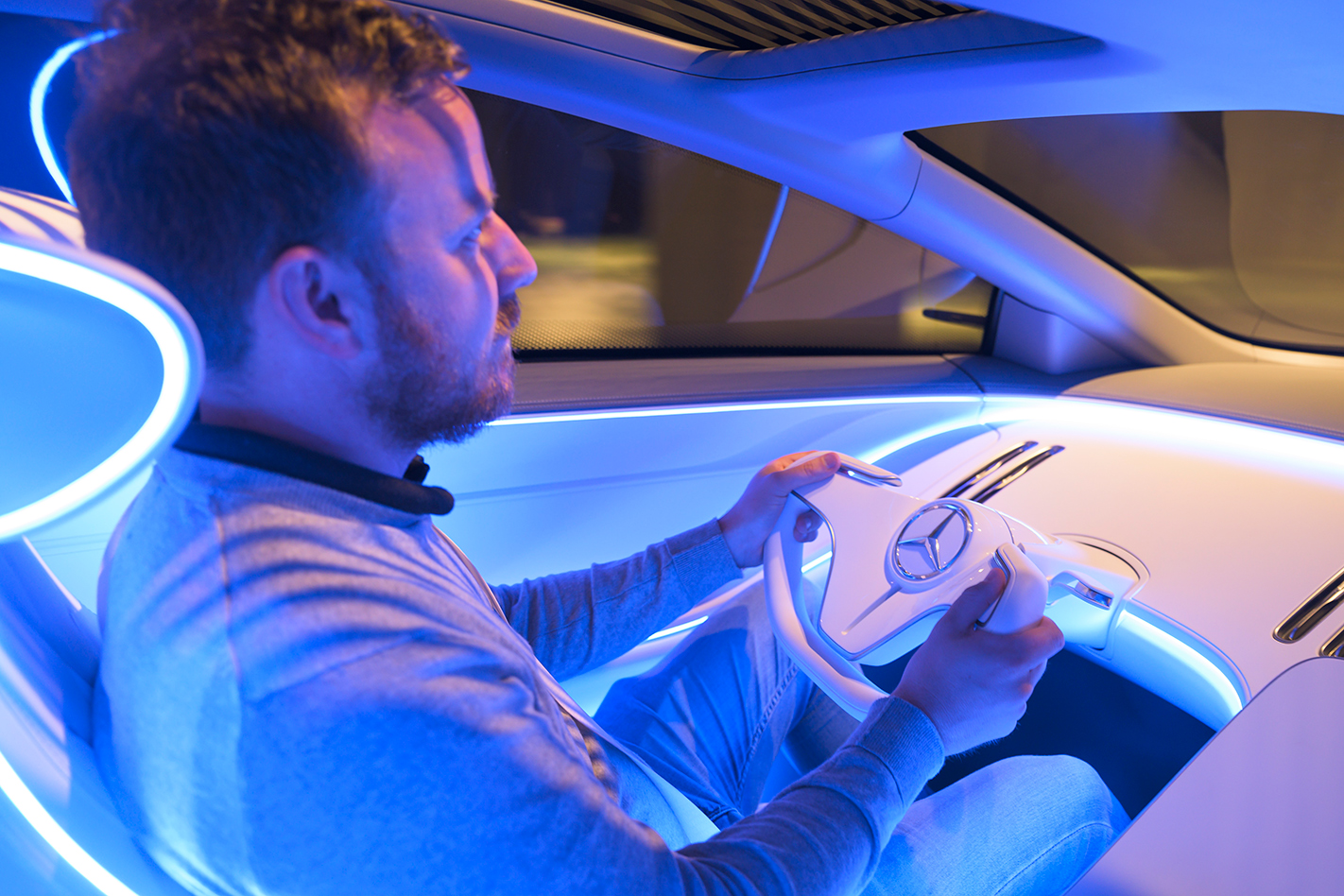
In other words, people still want cars, not spaceships, no matter what is used to drive the wheels. It’s a view manifested perfectly in the EQS, which pushes the boundaries of current vehicle design, but never breaks through them.
“The car still has to integrate itself into modern traffic,” Hutzenlaub says. “We can’t overload our customers by exaggerating the design. If we design something that looks like it belongs out in space, they’ll never find it. Basically, people are more shy than we think, so with that [in mind], this design is digestible.”
Digestible, sure, but more degustation than schnitzel and chips. The grille of this EQS, for example, is made of 940 individual LEDs mounted as strips of five (there’s another 229 at the rear, with the two nests linked by a light strip that encircles the vehicle), giving the front cluster this tangible 3D depth that, in a production model, will brighten as you approach the car, feed back charging information and otherwise communicate wordlessly with the owner. Or take the 24-inch wheels that took a month of man hours to complete. At a glance, they look like a simple 12-spoke design, but closer inspection reveals 80 black slivers designed to hide behind the shining silver spokes, and each milled then hand-painted before being slotted delicately into place.
But the real ‘miracle’ moment arrives with the headlights, which whir into life like an old-world cinema projector, a 500-LED matrix housed on fast-spinning plates, creating a 3D holographic image that flickers like a candle on each side of the grille.
“It’s putting technology on a stage,” Hutzenlaub says. “This is what design does – it’s not just taking a piece of technology and saying ‘here it is’. Design helps technology really shine on stage. This is what people expect of a futuristic, progressive car. They want technology that fascinates. They’re looking for a miracle, really.”

Some of that technology is firmly rooted in reality, as Hutzenlaub explains: “We’re not talking 25 years into the future. We didn’t want to irritate people. We wanted to focus on what a future electric S-Class could look like.” Other tech elements remain a fantasy … for now. That stunning curved glass, for example, that flows so seamlessly from the roofline into the door panels, isn’t glass at all, but a polycarbonate that’s easier to bend. Or the digital-screen-free cabin that magically displays all your driving information, navigation instructions and even new design flourishes (the car features wood panelling inspired by that of a boat’s deck) on whatever surface you happen to be looking at, essentially transforming the entire interior into a blank digital screen that comes to life on demand.
“The whole car gets a display, no matter what element is visible to you, and whether you’re in the front or the back, you get information. Whenever you reach towards the car, a camera watching your movement registers that, and so buttons or controls appear as you reach towards it, and then vanish as it moves away,” Hutzenlaub says.
The only downside, of course, is that while a production car would somehow feature a digital display neatly weaved through its cabin materials, the technology doesn’t currently exist. For now, then, the effect is simulated by a projector housed in the roof lining that uses the creamy-white dash elements as a kind of screen. The cabin is refreshingly minimalist as a result, all vegan-trim materials and a roof lining sourced from salvaged ocean plastic; largely free of the bling that would adorn a petrol-powered Benz limo. “I think the S-Class, even though it’s being modernised, will still express modern luxury,” Hutzenlaub says, “but our target here is to invite people to a more progressive luxury. People might find they feel more comfortable in something that is more progressive than in the world they’ve been living in before.”
Sink into the ferociously uncomfortable driver’s seat (the concept was never meant to be driven, and so the budget clearly didn’t stretch to cushioning) and you find a steering wheel, essentially chopped in half so that nothing obscures your view out of the windscreen. Yes, a concept with an actual steering wheel; further evidence that the future for this car is of the not-too-distant variety.
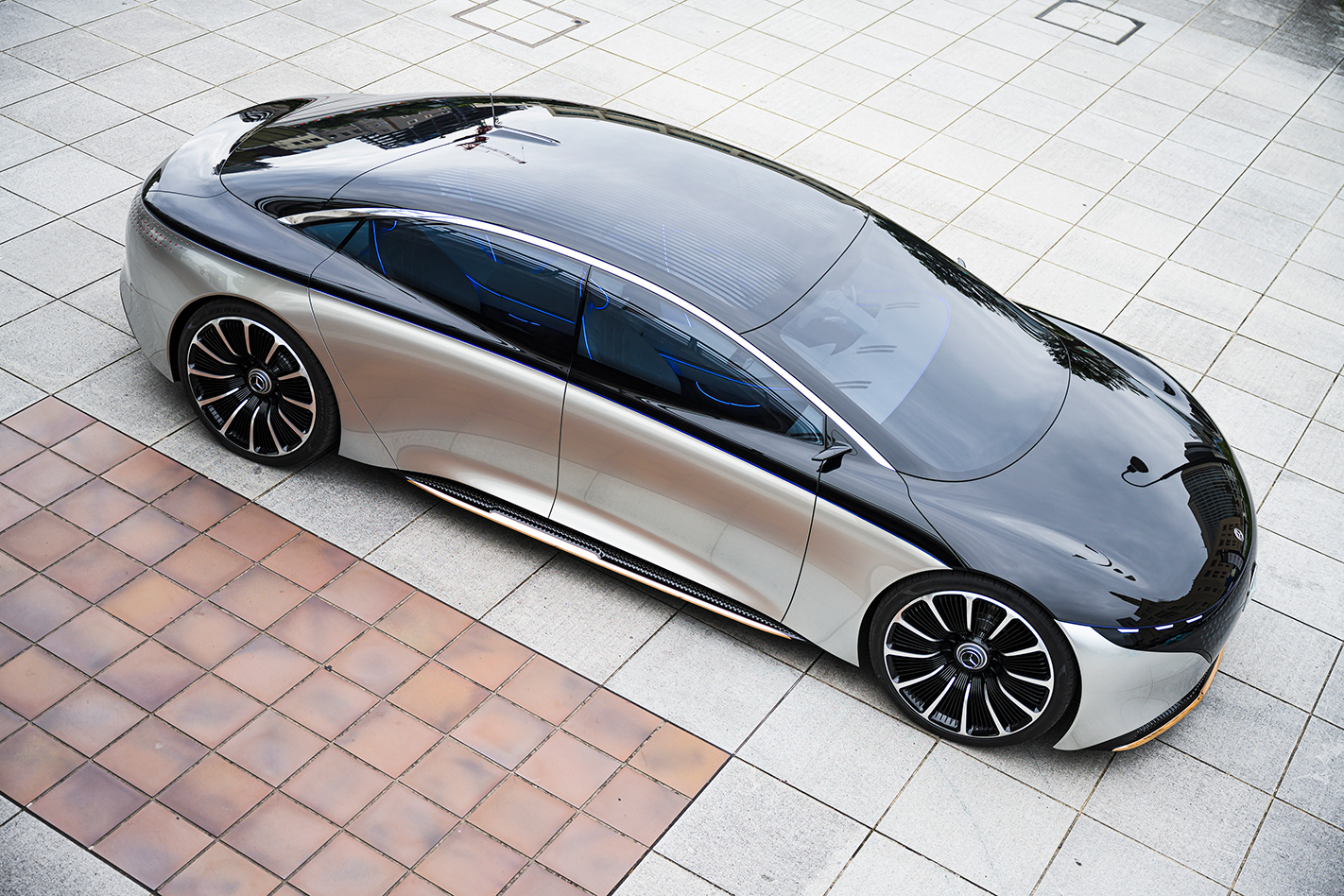
The result is an airy-feeling space that’s no wider than the S-Class but feels it, thanks to A-pillars 20cm further forward than in the limousine, adding to sense of unencumbered room in the cabin.
There’s always a little Wizard of Oz in concepts like this, and the peek-behind-the-curtain moment comes when you engage Drive or Reverse with a set of clunky old-school buttons that look ripped off an ancient VCR hidden beneath a folding lid in the centre console. Push the ‘D’ button and there’s a gentle thud as the EQS settles into gear, before gliding silently forward as soon as you release the brake.
Benz pegs outputs of a production model’s twin-motor (one at each axle, bookending a skateboard platform that pushes each wheel to the furthest corner, allowing for the body’s ‘bow’ styling) at a combined 350kW, of which I reckon I’d have called on about seven (see sidebar p63). The claimed sprint to 100km/h? Just 4.5 seconds – about what it took me to get to one tenth of that speed.
But make no mistake, Wheels has driven the future. And if there’s one important take-away from all of this, it’s that in Mercedes’ view of a not-too-distant tomorrow, cars might well be electric, but they’ll also have steering wheels. And drivers.
And what a glorious Vision that is.
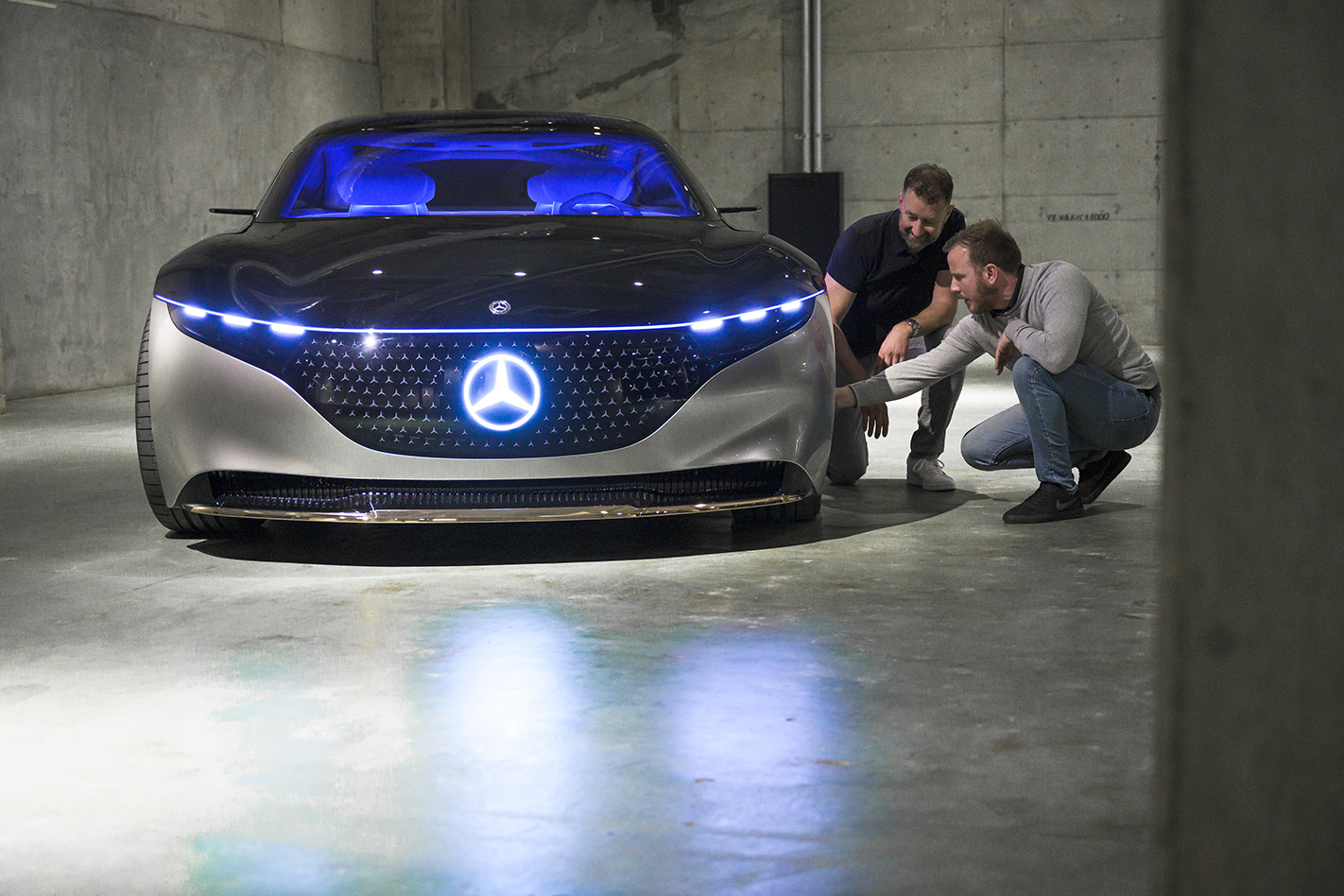
The Future seems bright
The cabin of the EQS is dazzling, not least because of its staggeringly high light levels. This is just one of the moments when you realise a car like this is designed to glow like a beacon on a show stand, not actually be driven on the road. Those interior lights are close to blinding, making you feel like you’re sitting inside a bright blue Dolphin torch and turning what’s outside the windows – and exactly where it is – into more guesswork than is traditionally comfortable when driving. It’s one reason we never considered planting it when we had the chance. That, and the desire to maintain cordial relations with the Benz staff running alongside the car like the Secret Service in a Presidential motorcade…
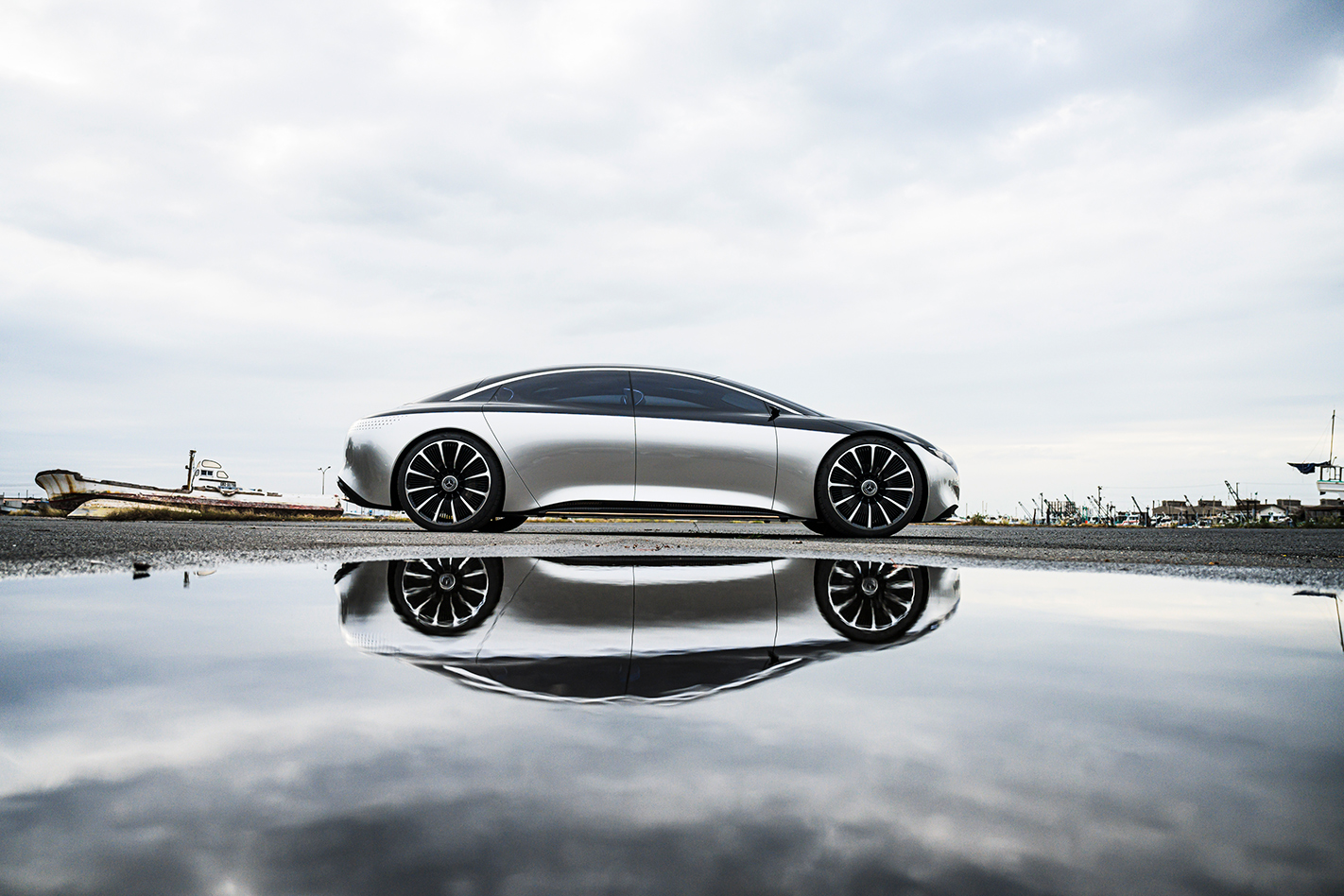
Hey Big Speeder
Mostly, car companies spend millions on concepts to preview future tech and design language, gauging public reaction to ensure they’re on the right course. Other times, like with the EQ Silver Arrow shown at Pebble Beach in 2018, they just want to pay homage to a glorious past and slacken the jaws of onlookers. The spectacular 5.2m-long single seater is a tribute to Mercedes’ W125 Rekordwagen, a teardrop-shaped prototype powered by a 541kW 5.6-litre V12 that was driven to a public-road record speed of 432.7km/h on a stretch of autobahn by German racer Rudolf Caracciola in 1938.

